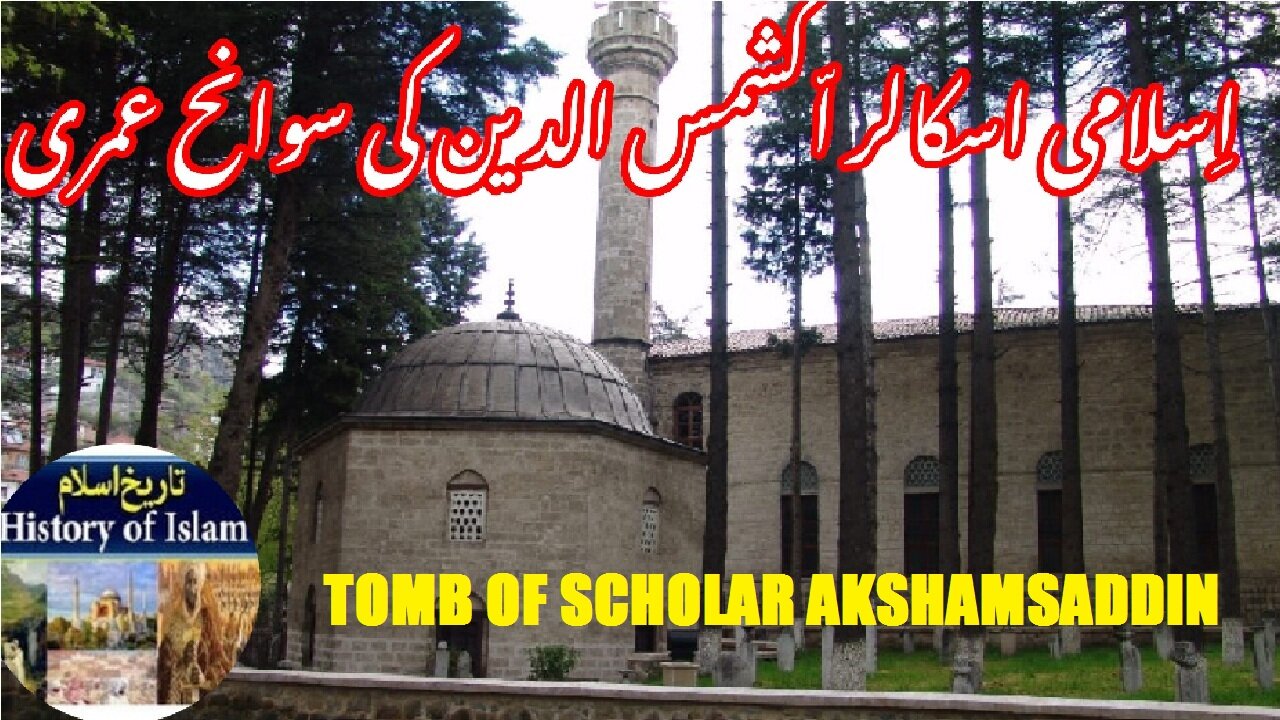Premium Only Content

Biography of Akshamsaddin history of his tomb | اکشمس الدین کی سوانح حیات اور ان کے مقبرے کی تاریخ
@islamichistory813 #MuslimScholar #Biography #CulturalHeritage #ScholarAkshamsaddin
Biography of Isamic Scholar Akshamsaddin and history of his tomb
Dekhti Aankhooon aur sountay kaanoon ko Asslamoalaikum, In this islamic informative video, we are presenting the biography of the renowned Muslim scholar Akshamsaddin, known fully as Muhammad Shams al-Din bin Hamzah. Get to know the key milestones of his life, his scholarly achievements, and the profound influence he had on Islamic thought. This exploration aims to highlight the importance of his work and its relevance in today's world.
Akshamsaddin (Muhammad Shams al-Din bin Hamzah), was an influential Ottoman Sunni Muslim scholar, poet, and mystic saint.
He was the grandson of Shahab al-Din al-Suhrawardi and a descendant of Abu Bakr al-Siddiq. He was an influential tutor and adviser to Sultan Mehmed the Conqueror. After completing his work with his master Sheikh Haji Bayram Veli, he founded the Shamsiyya-Bayramiyya Sufi order. He discovered the lost grave of Abu Ayyub al-Ansari (the companion of Muhammad) in Constantinople preceding the Siege of Constantinople.
In addition to his fame in religious sciences and Tasawwuf, Akshemsaddin was popular in the fields of medicine and pharmacology. There is not much reference to how he acquired this knowledge, but the Orientalist Elias John Wilkinson Gibb notes in his work History of Ottoman Poetry that Akshamsaddin learned from Haji Bayram Wali during his years with him. Akshamsaddin was also knowledgeable in the treatment of psychological and spiritual disorders. Akshamsaddin mentioned the microbe in his work Maddat ul-Hayat (The Material of Life) about two centuries prior to Antonie van Leeuwenhoek's discovery through experimentation:
It is incorrect to assume that diseases appear one by one in humans. Disease infects by spreading from one person to another. This infection occurs through seeds that are so small they cannot be seen but are alive.
Different sources claim that Akshemsaddin had seven or twelve sons; the youngest was the noted poet ?amd All?h ?amd?.
He died in the town of Goynuk in 863 AH (1459 AD),
So sisters brothers friends and elders, tomorow we will be described Biography of Islamic Sufi Scholar Akhundzada Peer Saif ur Rahman Mubarak. Allah hafiz
===================
-
 LIVE
LIVE
Rethinking the Dollar
11 minutes agoPeter Schiff Calls For Trump Crypto Rug Pull Investigation | Morning Check-In
26 watching -
 LIVE
LIVE
Bannons War Room
14 days agoWarRoom Live
22,316 watching -
 54:57
54:57
BonginoReport
4 hours agoIntroducing Hayley Caronia (Ep.152) - 03/04/2025
97.7K84 -
 2:35:27
2:35:27
Matt Kohrs
11 hours agoGAME OVER! The Stock Market Crash Will Get Worse || The MK Show
33K1 -
 1:24:53
1:24:53
Dear America
12 hours agoPam Bondi Announces NEW EPSTEIN FILES + Trump's First Speech To Congress!
49.9K21 -
 LIVE
LIVE
Wendy Bell Radio
7 hours agoDemocrats Think They're Still In Charge
10,365 watching -
 1:10:46
1:10:46
2 MIKES LIVE
3 hours agoTHE MIKE SCHWARTZ SHOW with DR. MICHAEL J SCHWARTZ 03-04-2025
9.35K2 -
 15:50
15:50
T-SPLY
10 hours agoCNN Finds Out Not One Democrat Is More Popular Than Donald Trump
18.1K3 -
 1:30:01
1:30:01
PMG
3 days ago $1.37 earnedBREAST BUTCHERS: Thousands of Women Mutilated by Fake Cancer Diagnoses!
4.39K4 -
 42:37
42:37
Degenerate Jay
19 hours ago $3.86 earnedWhy The Wonder Woman Game Was Really Cancelled - Rejected Media
48.7K5